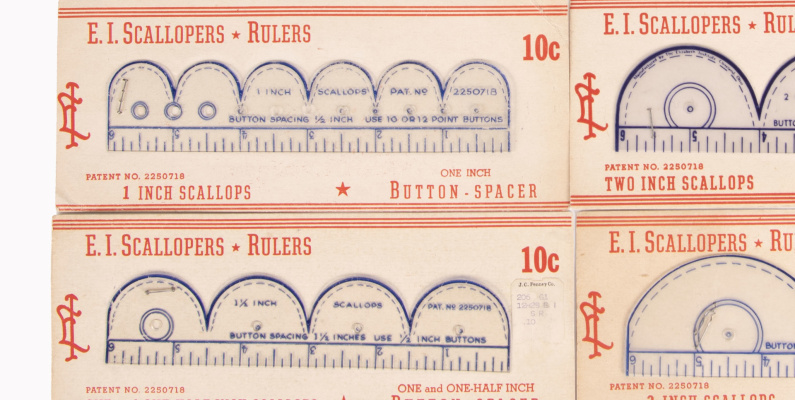
In our ongoing series from OM Curators and Curation staff sharing their favourite items from 2019, here are Nyssa Mildwaters and Emma burns to tell you a little about their favourite things.
Nyssa Mildwaters – Conservation Manager – E I Scallopers Rulers (image above)
When scallops aren’t shellfish, it is a word that describes a line of repeated curves on the edge of a garment.
Threads magazine says “Scallops … are a fabulous finish not only for hemlines but also for necklines and front edges of a garment”.
Getting the size right, and the curves smooth and equally placed can be a challenge but makes all the difference. In the 1930s, the Elizabeth Institute in Cleveland, Ohio came up with a great tool to help home sewers do just that - this set of four scalloper rulers in different sizes. They were used to get the buttons in exactly the right place, too.

Leg of an extinct moa. Donated by Michael Denny. Photo Kane Fleury, © Otago Museum
Emma Burns – Curator, Natural Science – Duck, Duck, Goose…and Moa
In August a collection of extinct bird bones was donated to the Otago Museum by Michael Denny. As a young geology student in 1993, Denny discovered a cache in a creek bed while exploring Pryde’s Gully, near Oamaru, with a friend.
He collected the remains of extinct moa, the long-gone South Island goose and dearly departed Finsch’s duck...as well as a few sheep bones. We are in the process of sorting who is who, what’s what and cataloguing this material into the collection.

Skull of an extinct South Island goose, Cnemiornis calcitrans. Donated by Michael Denny. Photo Kane Fleury, © Otago Museum.
Top Image: Set of scalloper rulers acquired by Patricia Coleman. G2019.29 Ex-University of Otago CLTE teaching collection. © Otago Museum Collection
